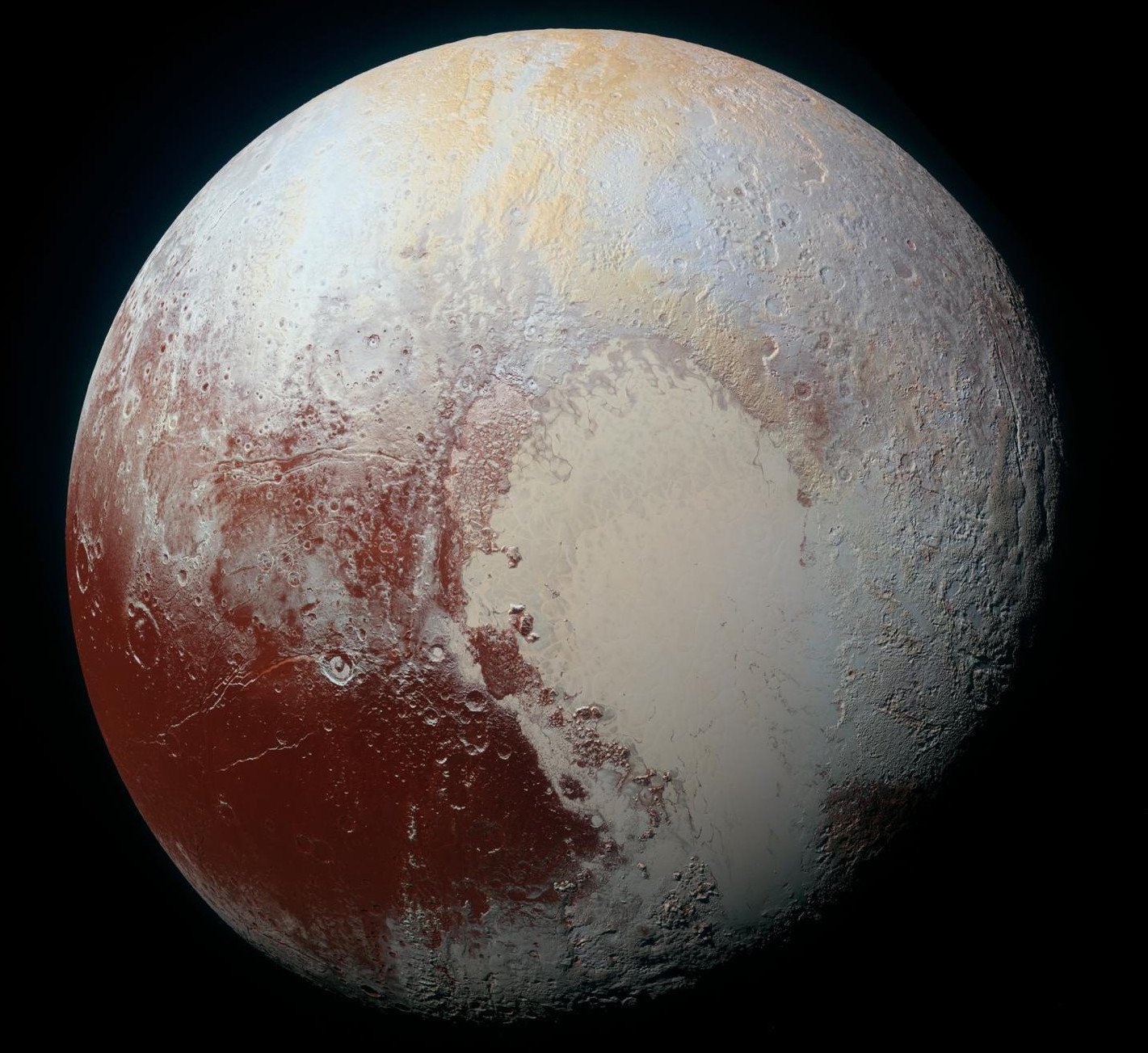The first released results from the flyby Pluto in July by New Horizons spacecraft have revealed the icy-dwarf planet’s substantial surface variations and distinctive moon rotations.
The color images of Pluto got with New Horizon’s Multispectral Visible Imaging Camera (MVIC) demonstrates a broad range of colors across the planet’s surface. They vary from dark red areas present at the equator to brighter bluer areas at higher latitudes. A heart-shaped region is present, which has different colors in its eastern and western parts.
Methane ice and carbon monoxide ice are located in the western part of the heart-shaped region. Extremely little volatile ice is present in the dark red equatorial region.
The information from the space vehicles Linear Etalon Imaging Spectral Array (LEISA) displays multiple small exposed areas of water ice in the red parts of the color images photographed by the MVIC.
This information is the first direct evidence of water ice on Pluto, after decades of attempting to find it leveraging earth-based telescopes.
Silvia Protopapa and Douglas Hamilton, astronomers from the University of Maryland authored the first published paper from the New Horizons passing by Pluto that was published in the Science Magazine.
Protopapa instrumental in the mapping the composition of the planet’s surface and identify ices on it. Hamilton found out the shapes, unique rotations and sizes of a couple of Pluto’s moon.
New Horizons reveals Pluto’s striking surface variations and unique moon rotationsHe also made the discovery that no other moon orbits Pluto. Protopapa said that it was known that the Pluto’s surface was heterogeneous as per earlier data. However, he was surprised to find amazing surface color as well as geological diversity.
The discovery will aid scientists comprehend the origins and later history of Pluto as well as its moons. As per the team, there are major regional differences in volatile ices on the planet’s surface.
Alan Stern, mission chief investigator, commented that the Pluto system was unexpected in many ways demonstrating that small planets can still be active billions of years after their inception.





